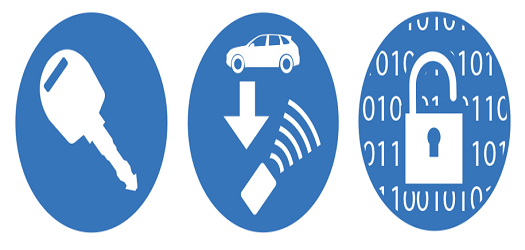
13 February 2019
Six ways thieves can break into a car and how to prevent it
Fending off the techno-thieves
THE DAYS of hotwiring cars are long gone. Today’s thieves use a variety of sophisticated techniques to gain access to cars and start the engine. The police, car makers and the insurance industry are playing catch-up as techniques evolve and adapt quickly to modern cars.
These measures are having some effect but as anti-theft systems become more advanced, so do the thieves. Below we outline six common methods used to steal vehicles that have keyless entry systems and keyless start buttons — and how to keep your care safe.
Six types of keyless car theft
1 Signal relaying
Keyless systems use a simple process. Fobs emit a short-range “friendly” radio signal that carries only a few yards. When the associated vehicle is close by (usually within a few metres), the car recognises the signal unlocks its doors. The same process is used for the ignition on cars with start buttons; the fob signal usually needs to be inside the car itself.
Relay thieves use wireless transmitters held up to the front door or window of a house (or the handbag/pocket of a car owner), to capture the signal from a fob and relay it to a target vehicle. An accomplice standing close to the vehicle captures the signal, fooling the car into unlocking. Once the accomplice is inside the car, the process can be repeated to start the engine.
2 Signal jamming
A device transmitting on the same radio frequency as remote key fobs is used to jam the signal that locks the car. The gadget might be in the pocket of a crook in a car park, or left in shrubbery near a driveway being targeted. When owners press the lock button on their key fob, the command is prevented from reaching their vehicle and it remains unlocked. Thieves are left with an open door.
3 Key programming
Whether thieves break a window or use the jamming technique above, once they’re inside the car, those vehicles with a start button rather than an ignition key can be simple to steal.
Every car sold for more than a decade has been required to have a standard diagnostic port fitted. This is typically located in the front footwell. Computer hackers have developed devices that plug into the port, boot up a vehicle’s software and then program a blank key fob.
In keyless cars this can be used to start the engine as well as unlock the doors. The time needed for the programming process is as short as 14 seconds. The cost of programming gadgets on foreign websites is as low as £10.
4 Close range testing
Some keyless fobs may still be in range of the car when if left inside the house near enough to the vehicle. Thieves can discreetly check by trying the door handles, which may unlock the doors, but are unlikely to be able to drive off in the car if they do get inside: keyless systems require a fob to be inside the car before the engine will start.
Even if owners do not fall victim to thieves, they may end up with a flat battery because the proximity of the key keeps electronic systems on standby.
5 Code grabbing
Thieves armed with advanced gadgets are thought to lie in wait for desirable cars. When the owner locks the doors, the signal is captured by the device, which then calculates the unlock code. Though there is little evidence this method is currently being used, some experts are convinced it is a looming threat. Others say it is impossible.
6 App hacking
This method is rarely used but could become popular as car makers attempt to connect their vehicles with owners’ smartphones. Apps that allow drivers to unlock their car can let thieves do the same thing on their own phone if they can log in to the app as the vehicle’s owner. All they need is the password, which they may steal or guess.
Recent Posts
Ascend Broking
ASCEND BROKING GROUP LAUNCHES ASCEND RISK
Ascend Broking





